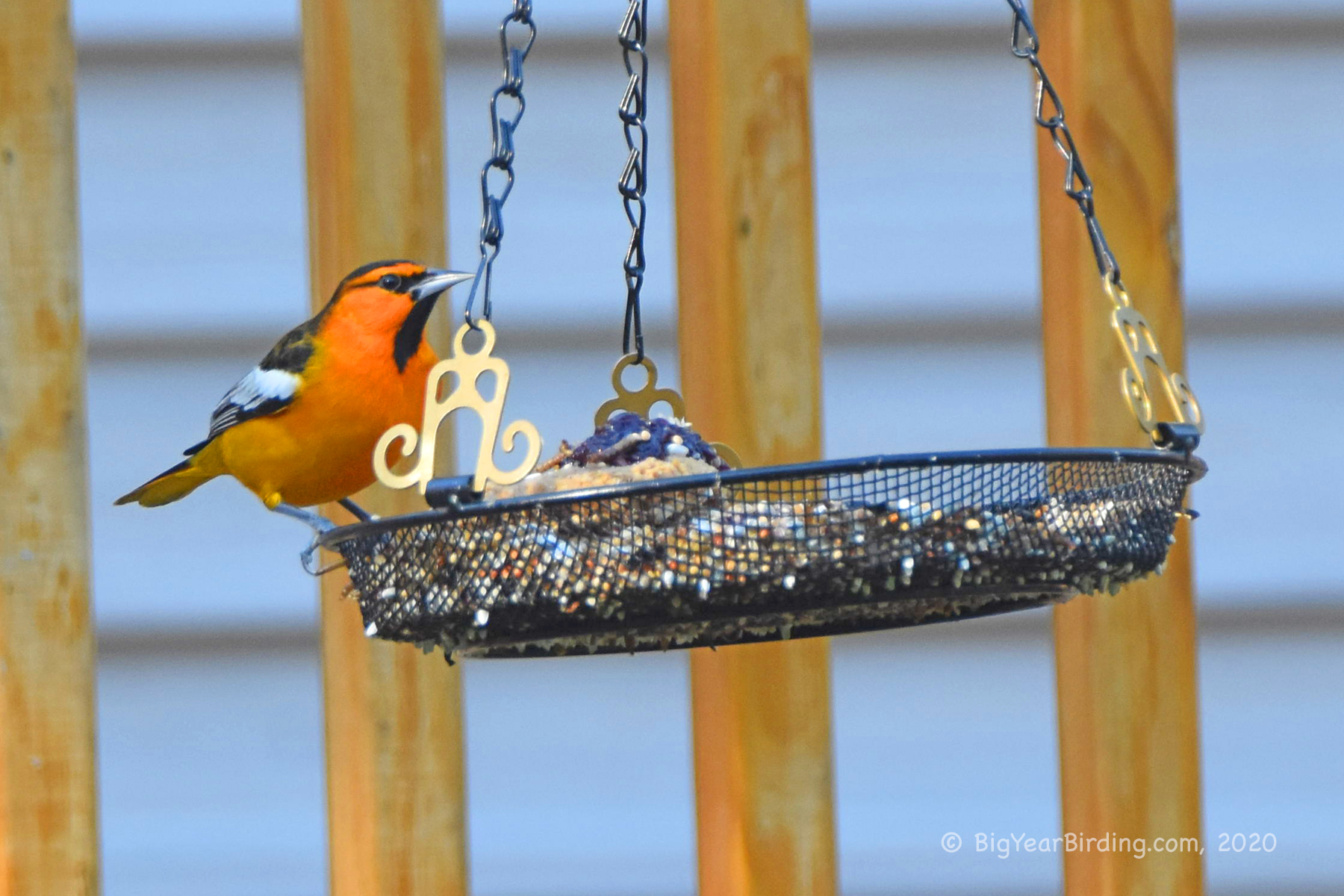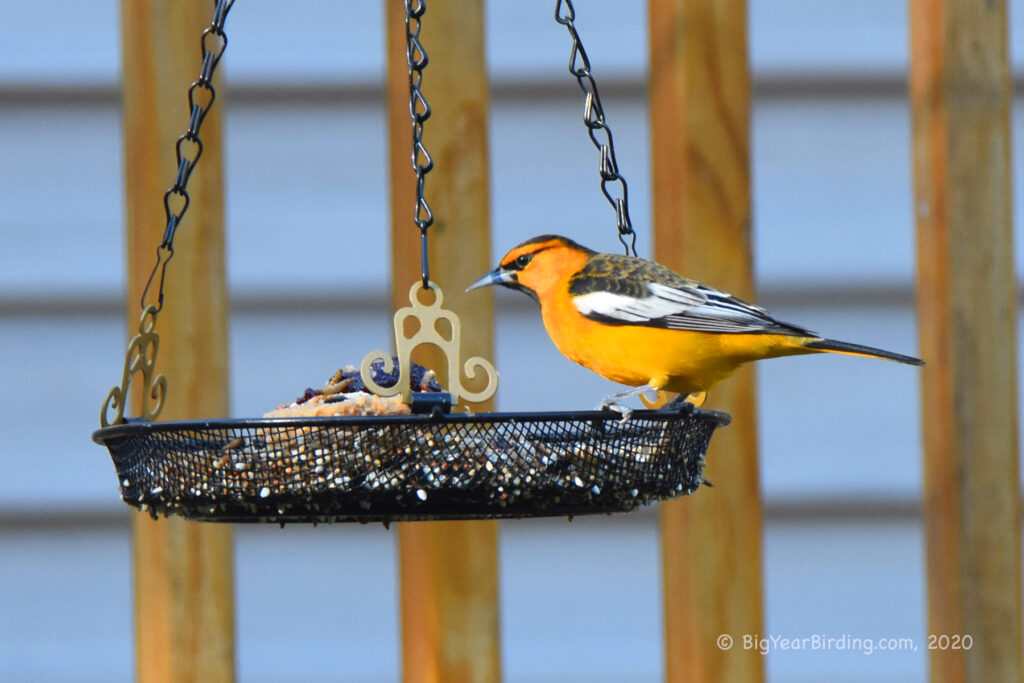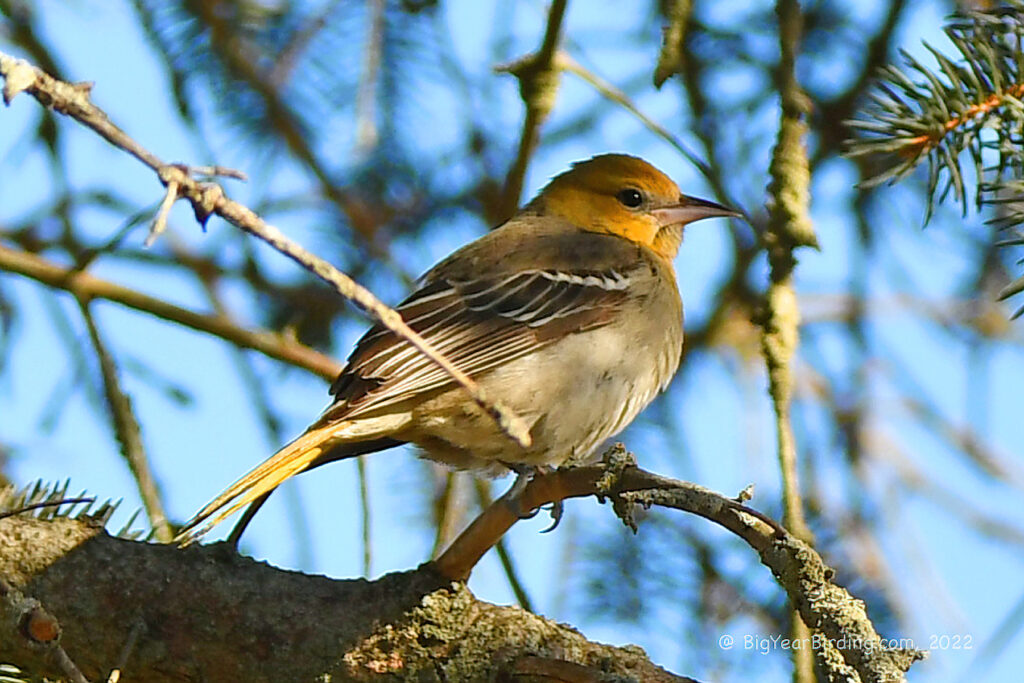
The Bullock’s Oriole (Icterus bullockii) is a strikingly beautiful bird that belongs to the family of blackbirds. Adult males measure approximately 7.5 inches in length, while females are slightly smaller, measuring around 7 inches long. Their wingspan ranges from 11 to 13 inches. Adult males are brightly colored with a flame-orange head, black face, and throat, and a large white wing patch. Females are more subdued, with yellowish-green underparts, brownish-gray upperparts, and a yellowish head.
One of the most distinguishing field marks of the Bullock’s Oriole is its distinctive song. It consists of a series of whistles, warbles, and trills, which are often compared to the sound of a flute. In flight, the Bullock’s Oriole displays a bold white wing patch that is visible from a distance, making it easy to spot. Juvenile birds resemble females, but they have streaked underparts.
Bullock’s Orioles are migratory birds that breed in western North America from southern Canada to central Mexico. They arrive in their breeding grounds from late April to early May and leave in August or early September. During the winter, they migrate to central Mexico, where they can be found in habitats such as tropical deciduous forests, scrublands, and agricultural fields.
These orioles are primarily insectivorous, feeding on a variety of insects, spiders, and fruit. They are also known to visit nectar feeders and can be attracted to gardens with fruit trees and berry bushes. During the breeding season, Bullock’s Orioles build elaborate hanging nests, which are woven from grasses, plant fibers, and other materials. They often nest in trees such as cottonwoods, willows, and oaks, and will occasionally use man-made structures such as clotheslines.

Bullock’s Orioles are often found in open habitats such as woodlands, riparian areas, and scrublands. They are known to be adaptable and can be found in urban areas as well. Although they are not considered threatened, habitat loss and fragmentation pose a significant threat to their populations. The protection and preservation of their breeding and wintering habitats are crucial for the continued survival of this beautiful bird.

